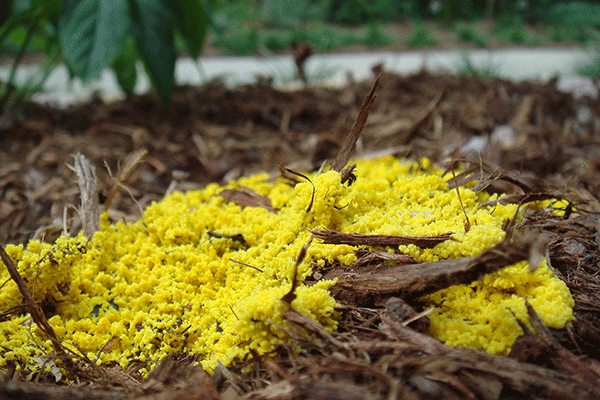| Serious Concerns | Major Symptom: |
|---|---|
| 1. Japanese beetles | Watch for skeletonized or lacy leaves on favored plants - rose, linden, grape and many more |
| 2. Bagworms | Insects have hatched and are feeding now; monitor juniper, spruce, arborvitae and pine for damage |
| 3. Chlorosis in trees | Light green or yellow color leaves with darker green veins |
| Minor Issues | Major points: |
| 5. Leafhopper damage | Many trees, shrubs, ornamentals, vegetable attacked; yellow stippling damage to leaves |
| 6. Galls | Abnormal growths caused by insects & mites; rarely serious |
| Timely Topics | Major points: |
| 7. Common tree leaf spot problems | Leaf lesions due to spring fungal infections very evident and common; too late for control |
| 8. Turf diseases appearing now | Common diseases appearing now in lawns; plants usually grow out of damage on their own; fungicide control seldom warranted |
| 10. Herbicide drift | Sensitive plants - grape, tomato, redbud - often show symptoms even as low exposure rates |
1. Japanese beetles Watch for skeletonized or lacy leaves on favored plants - rose, linden, grape and many more
Adult beetles feed on leaves, flowers and fruits of more than 300 plant species. Linden trees, roses, grapes and soybeans are a few favorite foods. The beetles feed over a 4 to 6 week period beginning in late June. They eat green tissue between leaf veins causing leaves to appear lacy. Severe defoliation can stress trees and reduce yields in orchards and crops.
The larvae, a grub, feeds on turf roots starting in late July/early August. If grub populations are high enough, the turf area affected may turn brown and the sod may pull up like carpet. Note: Treating for the grubs will not prevent beetle damage as new beetles fly in.
Reduced risk beetle control consists of hand-picking or knocking beetles off into a bucket of soapy water (7 PM at night is a good time), or exclude them from plants by using plant covers i.e. floating row covers, where feasible. Fine mesh nets can be placed over roses. Two organic sprays, Neem and Pyola, can protect plants for about 3-7 days.
Chemically, adults can be controlled with pyrethroid products like Tempo and Bayer Advanced Lawn & Garden Multi-Insect Killer (cyfluthrin) or Ortho Bug B Gone (bifenthrin). Sevin (carbaryl) is another option. These all provide about 2 weeks of protection for foliage and flowers after thorough coverage.
Because insecticides affect pollinators, try to spray in the evening when bees are not foraging and after plants have finished blooming. Follow label instructions to avoid harming pollinators and damaging plants.
Dealing with Japanese Beetles, Nebraska Extension
2. BagwormsInsects have hatched and are feeding now; monitor juniper, spruce, arborvitae and pine for damage
Bagworms feeding on conifer trees and conifer shrubs justify control. Large populations are capable of seriously damaging or killing evergreens. Monitor spruce, Juniper, Arborvitae and pine for bagworms. Eggs hatched from mid-May into June.
After hatching, larvae spin protective cases or “bags” around themselves. Bags are constructed of silk and fragments of needles or leaves. Bags are initially one-eighth inch long. As larvae feed and grow, they enlarge the bag. At this time of year, bagworms may be about one inch long. By summers end, bags are up to two inches long.
Bagworms move around trees feeding on needles until early September. Early signs of damage are brown or stressed needles at branch tips caused by tiny, first-stage caterpillars etching needle surfaces as they feed. Heavy infestations of older bagworms can defoliate a tree or shrub. Less severe injury will slow growth and stunt plants. Bagworms are especially damaging to conifers because destroyed foliage is not regenerated.
Insecticides are most effective when applied from mid to late June targeting young caterpillars. Insecticidal spray applications require thorough coverage to penetrate the tree canopy. It’s best to use ground equipment capable of delivering higher spray volumes and pressure. Aerial applications may not provide thorough coverage. Insecticides containing Bacillus thuringiensis (Bt), spinosad, or neem oil (azadirachtin) and insecticidal soaps are effective against young larvae, but may require repeat applications. These products generally have minimal impact on beneficial insects.
Other insecticide options for bagworm control on conifers includes acephate, bifenthrin, chlorantraniliprole, carbaryl, cyfluthrin, dimethoate, esfenvalerate, fluvalinate, lambda-cyhalothrin, malathion, permethrin, and tebufenozide. When making an application, be certain the product is specifically labeled for both the target pest and plant species.
Bagworms, Nebraska Extension
3. Chlorosis in treesLight green or yellow color leaves with darker green veins
Chlorosis describes any condition in which leaves or needles develop an abnormally light green or yellow color with the veins remaining a darker green. The most common cause of chlorosis in trees is a deficiency of iron in leaf tissues, usually due to high pH soil. At high pH, iron and some other nutrients like manganese, are not as readily available. There is usually adequate amounts of iron in the soil. Other causes of chlorosis, or conditions that can compound chlorosis, include over-watering, over-fertilizing with nitrogen, and damage to roots.
The best way to manage chlorosis is to avoid it. Select trees and shrubs that are not susceptible. In Nebraska, we most commonly see chlorosis in pin oak, swamp white oak, silver maple and red maple. For trees exhibiting iron chlorosis, treatments include trunk injections or soil application. See the links below for information about these two options.
Chlorosis of Trees in Eastern Nebraska, Nebraska Forest Service
Chlorosis of Trees in Central and Western Nebraska, Nebraska Forest Service
5. Leafhopper damageMany trees, shrubs, ornamentals, vegetable attacked; yellow stippling damage to leaves
Leafhoppers on Ornamentals, Utah State University Extension
6. Galls Abnormal growths caused by insects & mites; rarely serious
Insect and Mite Galls, University of Minnesota Extension
7. Common tree leaf spot problemsLeaf lesions due to spring fungal infections very evident and common; too late for control
Leaf infections early this year were favored due to extended cool wet weather. Heavily infected leaves are now starting to fall, causing concerns to homeowners. Unfortunately, it’s too late to treat; fungicide applications are not effective at preventing infections this late in the growing season. Encourage homeowners to rake up and discard fallen leaves to reduce disease pressure on trees next year. Keep trees well watered this summer to prevent additional stress and make sure trees are mulched around the base. Otherwise healthy vigorous trees usually tolerate some leaf loss without serious long-term consequences. Fungicides should be applied next spring on trees with a history of serious defoliation.
Apple Scab, Nebraska Extension
Cedar Apple Rust and Related Rusts of Apples and Ornamentals, Nebraska Extension
Diseases of Broadleaf Trees, Nebraska Forest Service
Leaf Spot Diseases of Trees and Shrubs, University of Minnesota Extension
8. Turf diseases appearing nowCommon diseases appearing now in lawns; plants usually grow out of damage on their own; fungicide control seldom warranted
Brown Patch Disease of Turfgrass, Nebraska Extension
Dollar Spot Disease in Turgrass, Nebraska Extension
Leaf Spot and Melting Out of Turf, Nebraska Extension
10. Herbicide driftSensitive plants - grape, tomato, redbud - often show symptoms even as low exposure rates
Diagnosing Herbicide Injury on Garden and Landscape Plants, Purdue University
Herbicide Damage to Trees, Nebraska Forest Service
Herbicide Damage to Vegetable Plants, Nebraska Forest Service
Reference to commercial products or trade names is made with the understanding that no discrimination is intended and no endorsement by Nebraska Extension is implied. Use of commercial and trade names does not imply approval or constitute endorsement by Nebraska Extension. Nor does it imply discrimination against other similar products.

